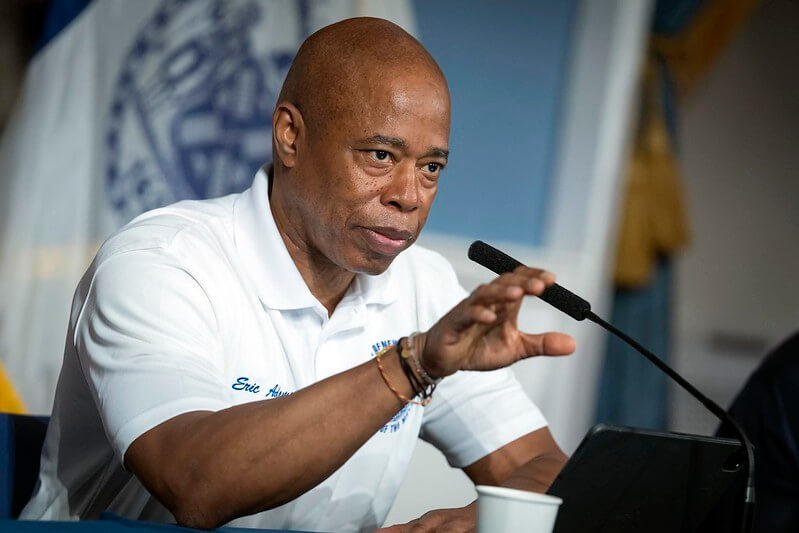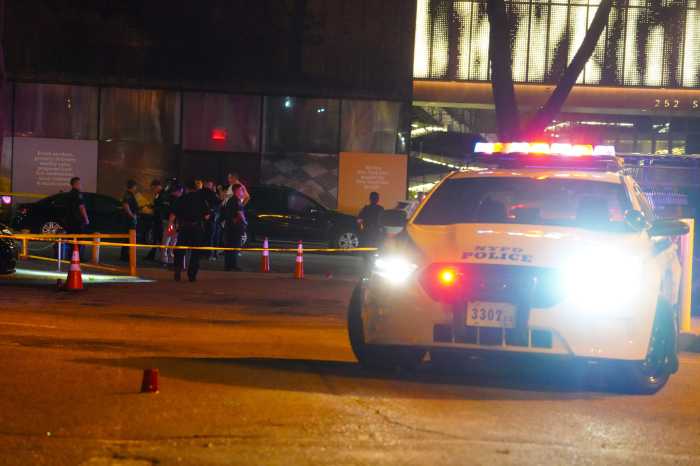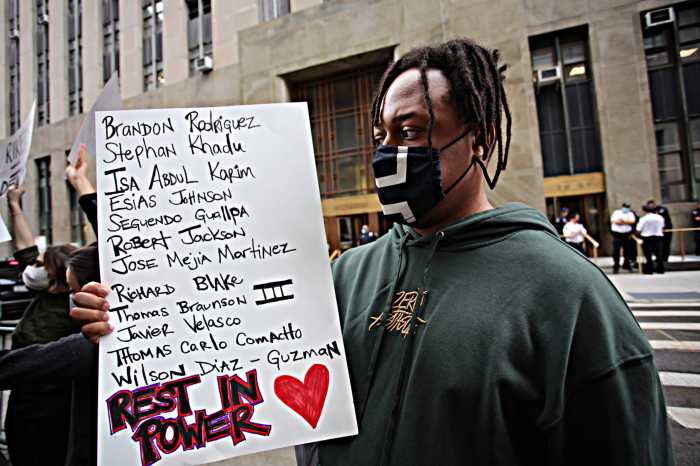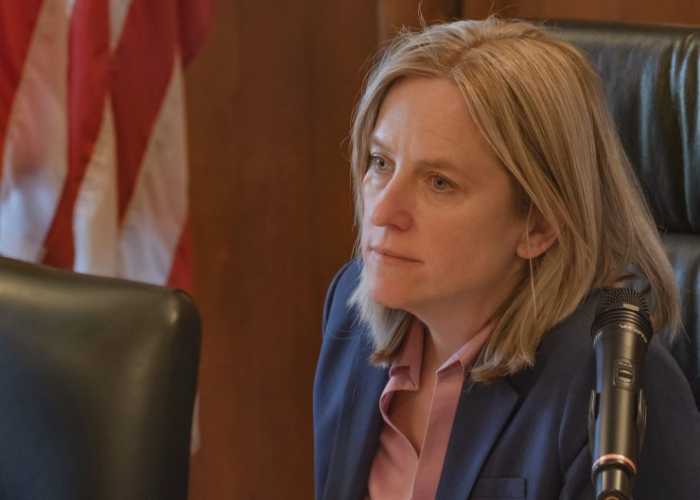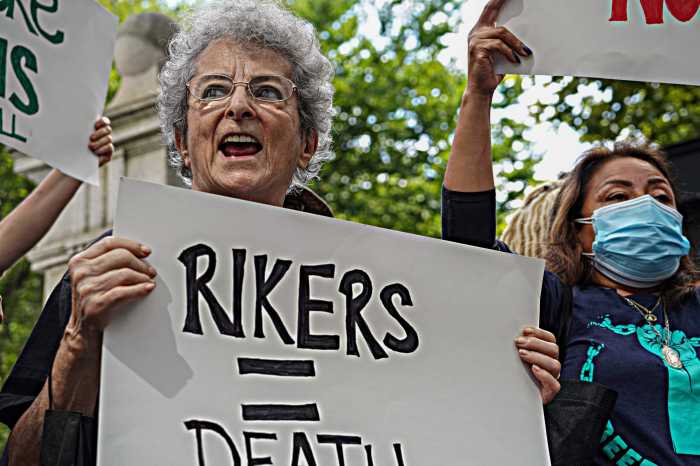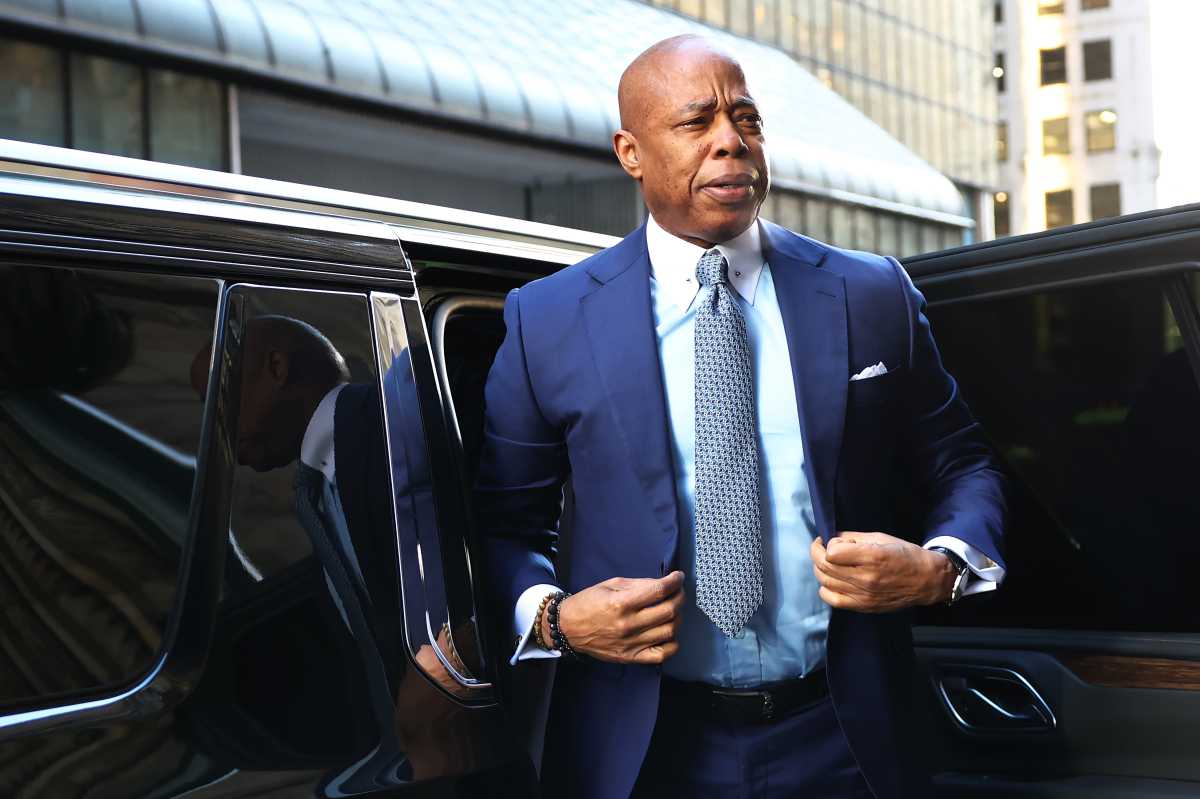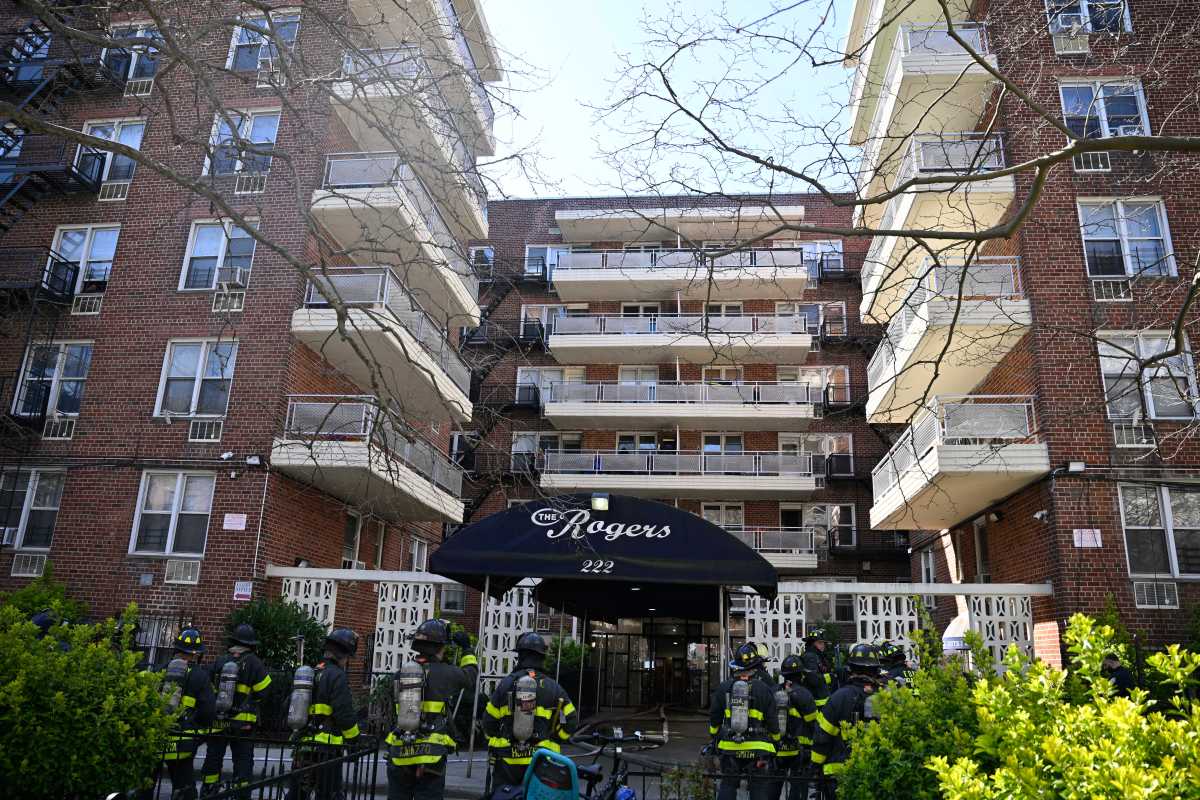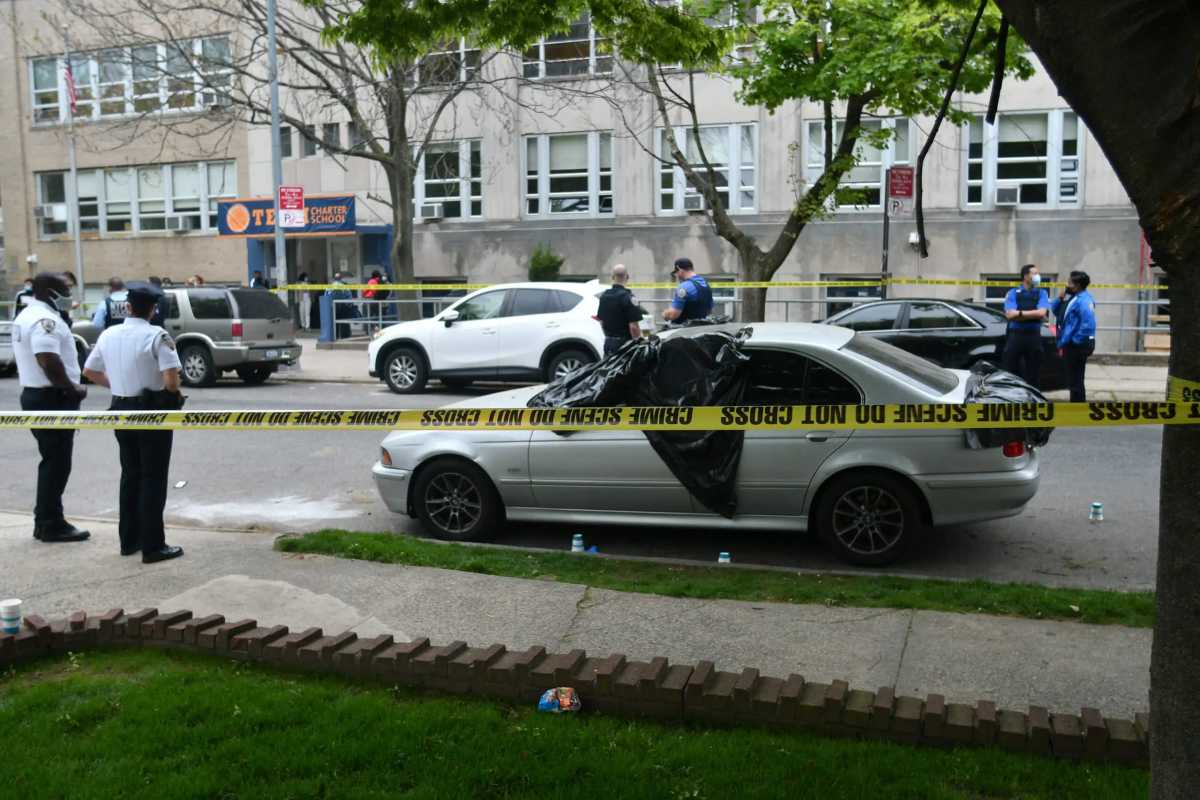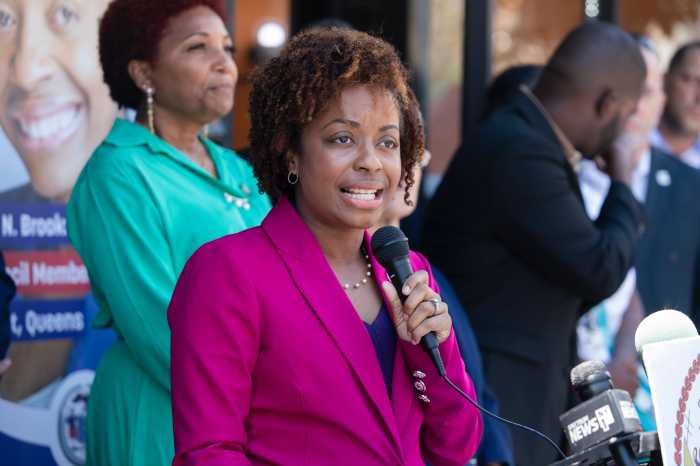The city will start limiting how long migrants can spend in its homeless shelters as it continues struggling to find enough housing for tens of thousands of new arrivals, Mayor Eric Adams announced on Wednesday.
Under the new policy, single adult migrants already living in shelters will be given 60 days to find “alternative” housing, according to City Hall. The time limit will be paired with “intensified” case management aimed at helping migrants find long-term housing by connecting them with friends and family.
While rolling out the policy during a City Hall press briefing on July 19, Adams — who has been desperately pleading for help with the migrant influx from Washington for months — struck a dire tone about the current state of the crisis. He said that with roughly 105,800 people currently living in Big Apple shelters, 54,800 of whom are recent arrivals, the city has reached a point where it cannot accommodate any more migrants — a sentiment he’s repeated with increasing urgency in recent months.
“We stated several months ago that we have reached full capacity,” the mayor said. “And that full capacity was verbalized and now … it’s going to be visually actualized. We’re going to see how much our cup has basically runneth over. We have no more room in the city.”
Adams insisted he’s taking the action as a means of making space in overcrowded shelters for families with children.
“We must now take additional steps to create urgently needed space for families with children who continue to arrive seeking asylum and help those with us take the next steps to their journey,” he said.
The city will start handing out 60-day notices to newcomers who have been in its shelters the longest, said Deputy Mayor for Health and Human Services Anne Williams-Isom. The notices will be distributed on a rolling basis, she said, while not providing a clear number of migrants the city would like to move out of shelter.
Those who aren’t able to find an alternative living situation in 60 days must reapply for a new placement in city shelters at the Roosevelt Hotel in Manhattan, which is being used as a migrant arrival center. While the administration’s “goal” is not for the shelter stay limit to increase street homelessness, Adams didn’t rule out the possibility that it might.
“Everyday this team is figuring out: where do we put the next body?” Adams said. “Our goal is: no child, no family is sleeping on the streets. That’s our goal. And we are getting closer and closer to being unable to fulfill even that goal.”
Adams pointed out, as he has often done over the past year, that so far the city has found housing for most recently arrived migrants. He insisted that what he sees as the administration’s successful efforts to house asylum seekers is why New Yorkers don’t see large homeless encampments throughout the city.
During the announcement, the mayor also unveiled a new flyer designed to discourage more migrants from coming to the city. The flyer asks migrants to “consider another city” as it warns that there is “no guarantee we will be able to provide shelter and services to new Arrivals;” “housing in NYC is very expensive;” and “the cost of food, transportation, and other necessities in NYC is the highest in the United States.”
The leaflet will both be handed out at the border and distributed on social media, he said.
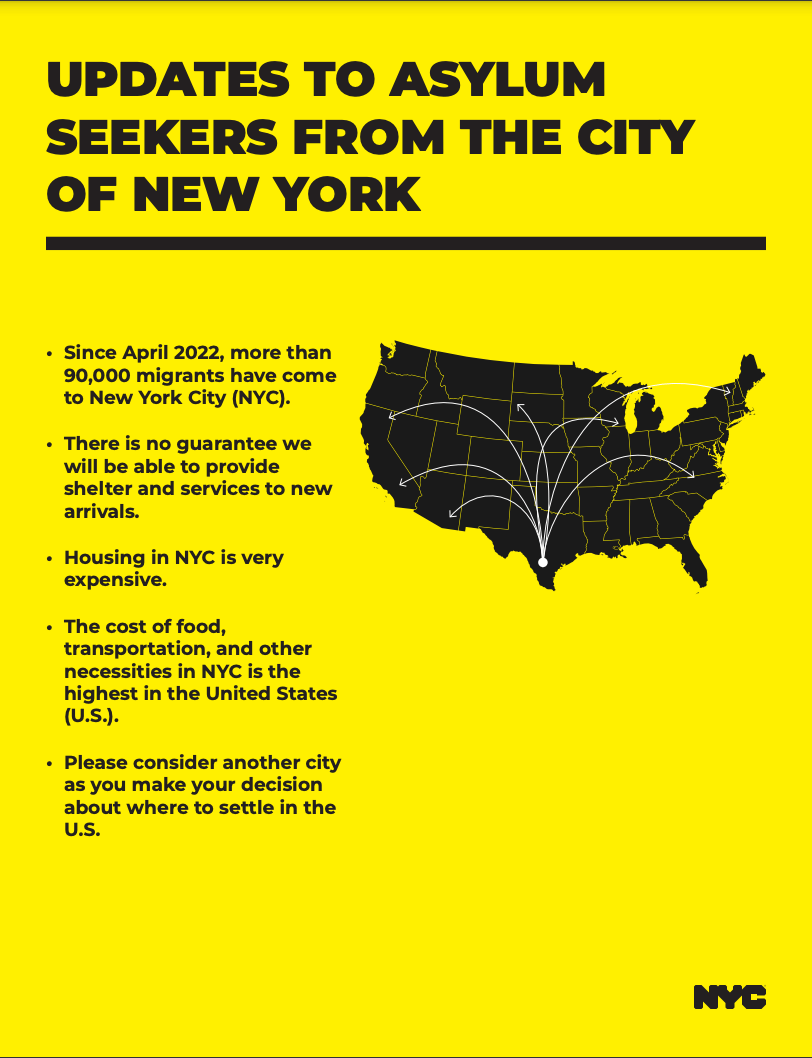
The move comes as Manhattan Supreme Court Judge Erika Edwards held the first conference Wednesday afternoon on Adams’ proposed legal motion to suspend the city’s legally mandated “right-to-shelter” — which requires it to provide a shelter bed to any person who requests one. In the motion, the administration is asking the court for relief from its obligation, established through the 1981 Callahan v. Carey consent decree, to provide shelter specifically to single adults and couples seeking shelter when it “lacks the resources and capacity” to do so.
Although, lawyers from the Legal Aid Society — who are representing the Coalition for the Homeless in the case, told reporters Wednesday afternoon they are working with the administration to avoid it filing the motion to change right-to-shelter.
But, like many of Adams’ bids to alter the city’s legal shelter requirements, the new policy drew swift backlash.
Deputy City Council Speaker Diana Ayala — who lived in a shelter for part of her childhood — sharply criticized the measure in an interview with amNewYork Metro.
“At this point I’m speechless, because I have no idea who’s advising the mayor on these matters, but this is probably the dumbest policy change I’ve ever heard of,” Ayala said.
The council member said the policy, which she characterized as “inhumane,” will only add to the immense strain placed on homeless individuals living in shelter.
“It’s very difficult for individuals that are unhoused as it is right, to try to navigate the day-to-day,” Ayala said. “There are a bunch of stressors, you don’t have that sense of permanency. So to add to that unnecessarily, without justification, it doesn’t make any sense to me. It is inhumane to do that. And so I question the rationale behind this policy change.”
Joshuah Goldfein, a Legal Aid staff attorney, said his organization will be monitoring how the city roles out this new policy to make sure it doesn’t break the law.
“They have an obligation to shelter everybody, we’re going to be watching very closely to see how they communicate to people what’s going on because they shouldn’t be giving people false or misleading information,” Goldfein said. “But we understand that they want people to work with them to identify resources that can enable them to leave.”



